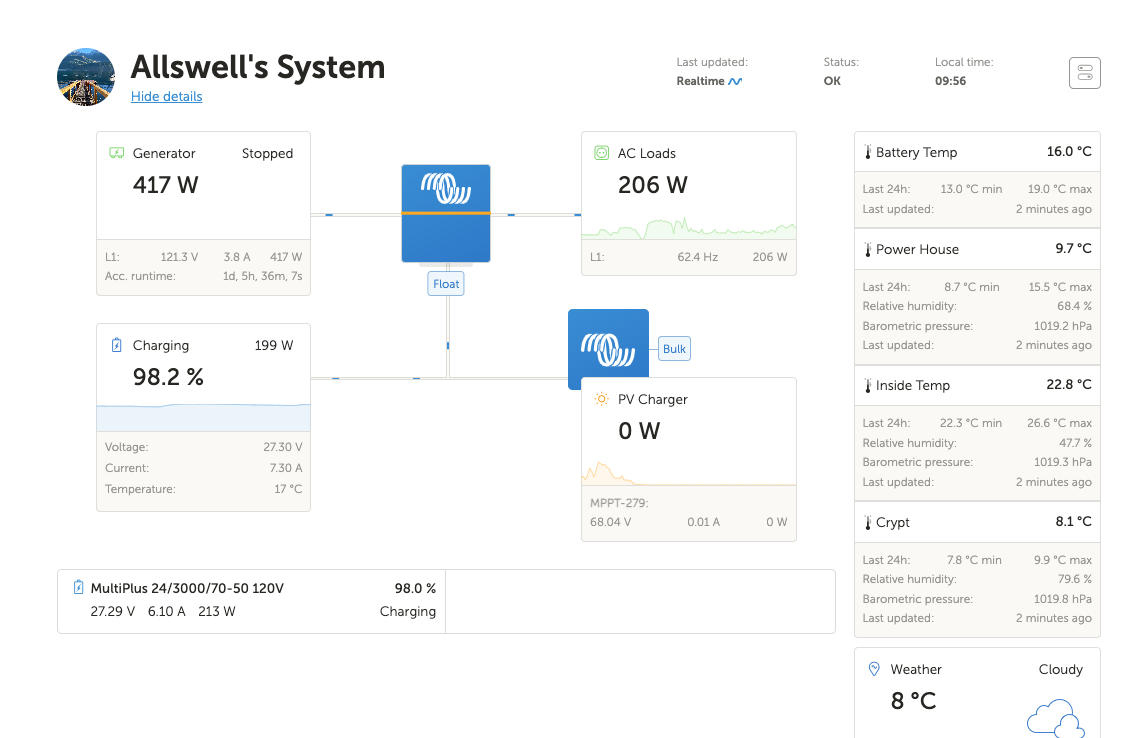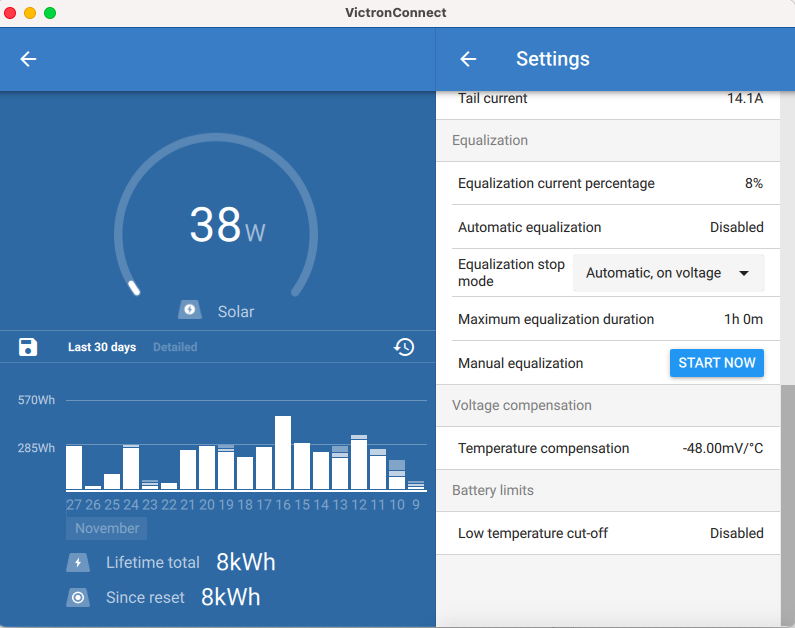I have a 24v bank of fla's comprised of twelve 6v 235ah making a bank of 705ah. They are Rolls so I have set the charge voltage to 30 and float to 27 which is recommended. I've been charging this week to get a full deep charge accomplished in this new bank as it's been about a month now and we haven't done a full float on it. So, lots of charging. Right now though, the system shows that the volts is under the 30v that the charge is set to, but above the 27v that float charges at.
QUESTION: Did I wrongly assume that it would do a bulk/absorb charge to reach 30v, then switch to float to finish for an hour? Not sure why I'm seeing what I'm seeing. Is something wrong here or is something right here:


